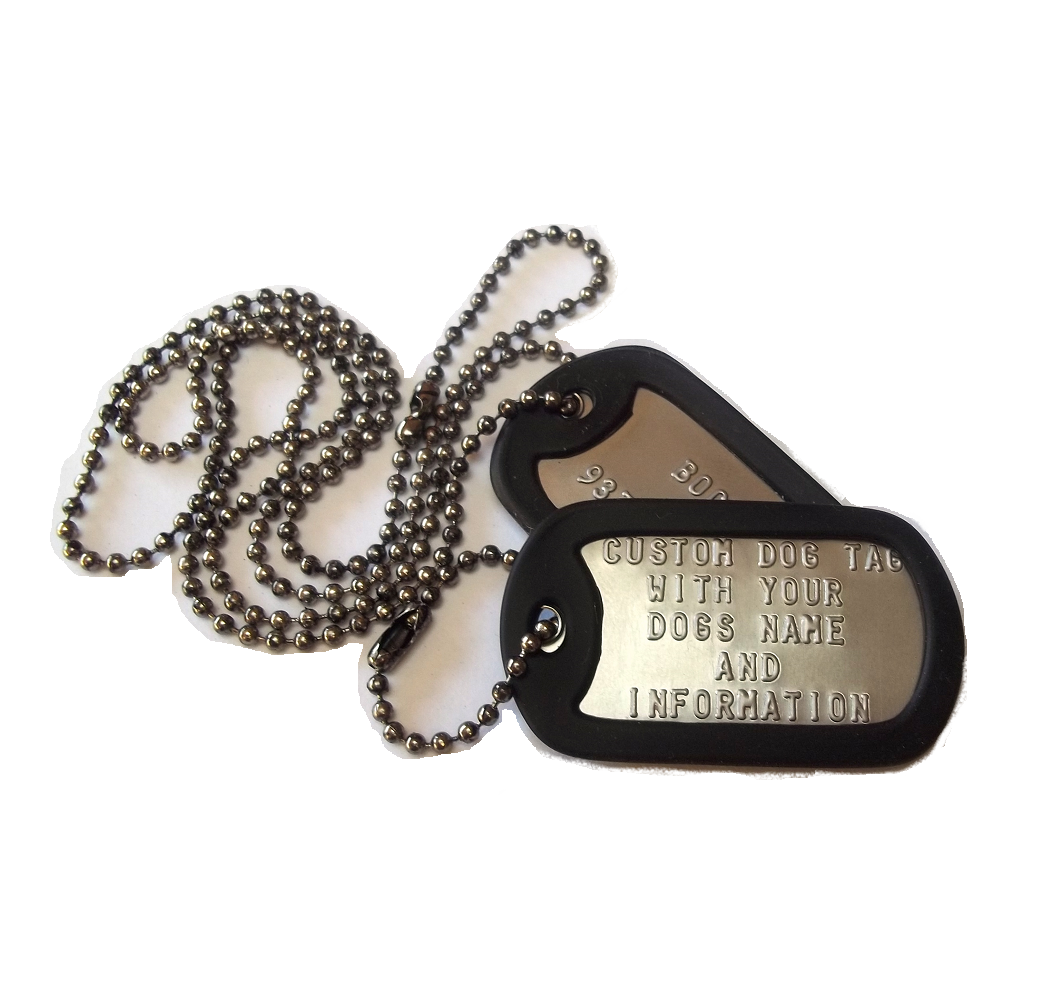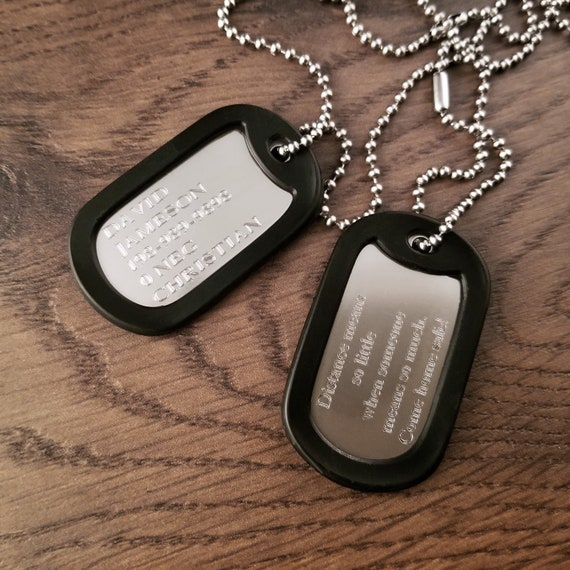

#Round dog tags military manual
Small scale personalization can be made using manual machines which has a rotating drum and a handle for punching. These machines are similar to the machines that are used to emboss credit and debit cards. Military dog tags are personalized using embossing or debossing machines. These tags have also made their way into youth fashion and musicians. Old people with special medical conditions have found the tags to be useful when travelling alone. Outside the military, they are used by bikers and adventure enthusiasts with their address and emergency contact numbers. During war, if the battle conditions do not allow immediate removal of dead soldiers, one tag is collected and the other is left on the body of the soldier for retrieval of the body later. What is the use of Dog Tags?ĭog Tags are used to identify the dead or wounded during war using the information recorded on these tags. Bigger dia ball chain will not move freely in the tag hole which is 4mm in dia.
#Round dog tags military upgrade
The standard issue ball chains are of 2.5 mm and the user can upgrade to a 3mm ball chain. One tag is hung on a long ball chain about 24 inches in length and the other tag is hung on to the long chain using a small ball chain measuring about 4.5 inches length. The American dog tags have two separate plates. These plates can be separate, like the American tags, or made as a single tag, like the Canadian tags, which can be broken into two when required. A typical military dog tag set has two plates measuring 1 inch x 2 inches, with identical information on both the tags. Tags are also available in brass and copper which patinate when exposed to air. The mil-spec tags are made up of T304 stainless steel which has 18% chromium and 8% nickel to prevent corrosion. What are dog tags made up of?ĭog tags are made of corrosion resistant metal like stainless steel or aluminium.
#Round dog tags military license
It is derived from the term "hundemarken" which was similar to the tag that each dog in the then Prussian capital of Berlin required to wear, after their owner paid the license fee. The term ‘dog tags’, with reference to military tags, comes from the Prussian Army in 1870.

Therefore, if you are looking for a tag for your pet then, the appropriate term is ‘pet tags’ and not ‘dog tags’. Military identification tags are called as dog tags since it resembles the tags used by pet owners.

With advancement in technology, the problem of identifying the dead has been solved by using DNA sampling. Today dog tags are only the first level of identification in the battlefield. Shortly before World War I the tags became a part of the army field kit. In early twentieth century the tags were officially introduced in the form of a round disk stamped with a soldier’s name, number, company and regiment. After the Spanish-American war of 1899 an official request was made to introduce an identity disk. Later, vendors who followed the armies supplied engraved metal tags. Marking on clothes, pinning paper tags on the shirts, using old coins, carving chunks of wood and stringing around the neck were some of the earliest attempts of identification. The soldiers were terrified of being buried in unmarked graves and found some improvised ways to overcome this problem. The inability to identify some of the dead soldiers created a need for an identification tag that could withstand harsh battle conditions and resistant to corrosion. The identification tags first surfaced during the American civil war. For a simple understanding of dog tags and its uses you can take a look at this video. In India, the term ‘dog tags’ is often confused with pet tags that are used on animals.

They are issued to soldiers as a replacement for plastic ID cards because of their resistance to harsh battle conditions and durability. These tags are used in the identification of the dead and wounded in the battlefield. Dog tag refers to a type of military identification tags worn by soldiers during war.


 0 kommentar(er)
0 kommentar(er)
